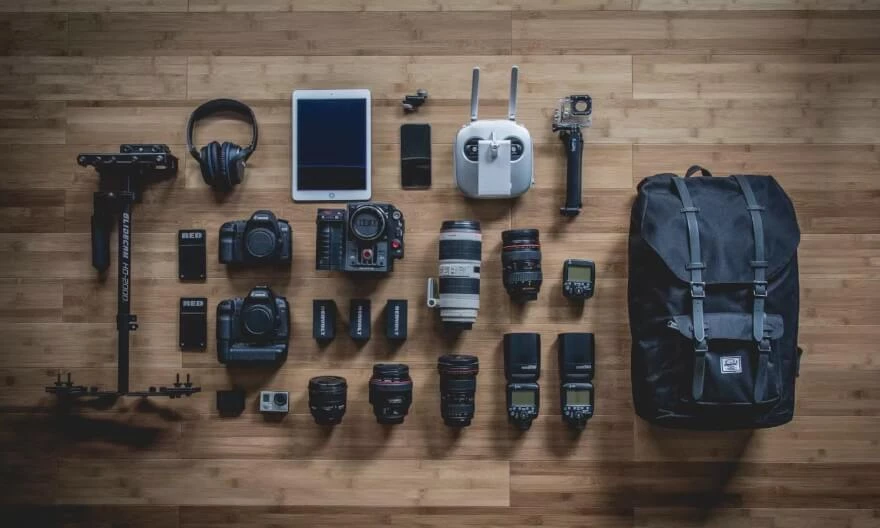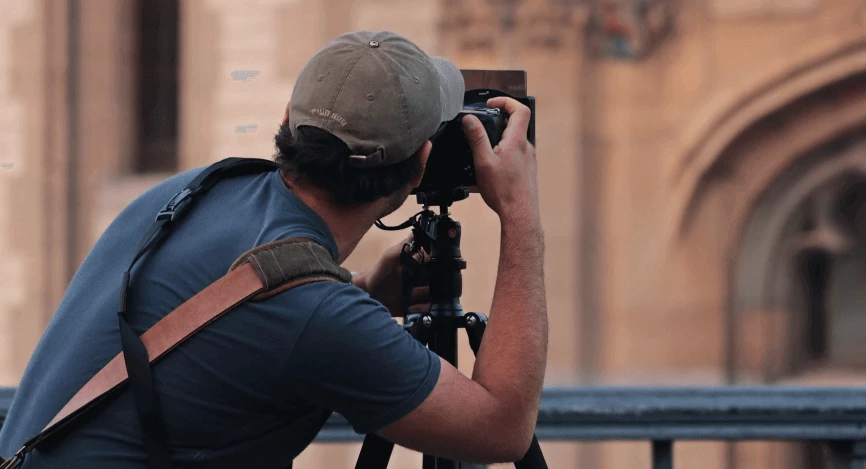Travel Photography Gear: Equipment List

- Essential travel photography gear
- Cameras
- Lenses
- Tripod
- Miscellaneous
- Extras
- Filters
- Adventure photography gear
- Conclusion
If you are a full-time photographer, whether it is a professional approach or just a hobby, you have probably wondered, "How to travel with all this stuff?"
Today we are going to talk about what kind of gear is best for certain trips, so that your equipment stays with you, safe and sound at all times. We are also going to talk about the equipment itself, what to take with you on travel or hiking, with the variety and examples.
Each person, depending on their commitment to photography, will have their own personal set of tools and devices that will suit them personally. Today, we are going to create a travel photography equipment list that will work for professionals and beginners alike.
Essential travel photography gear
At first, you need to figure out the things that are essential and mandatory for your traveling. Cameras, lenses, batteries, tripods, memory, some extras, and accessories. Let us break it down one by one.
Cameras
Usually, photographers have 2 kinds of cameras for filming and shooting. For instance, you can consider the Nikon Z7 camera body for your main stills, because it has the highest resolution and best dynamic range. And the other camera would be something like the Fuji X - T3, which is a better filming camera. If you are only planning to take pictures, then you can make a choice in favor of one or another sensor type in your camera. Depending on the sensor, you will also choose the lenses. Some are good for macro photography, some for landscapes and nature. We recommend reading the link above about the relationship and ranking of different sensors.
Lenses
As we have 2 camera bodies, we are going to have two lenses for them accordingly.
The 1st lens of ranges from 24 to 70 mm and the other from 16 to 35 mm to shoot far and close-ups, respectively. The 24 mm lens has a good use for landscape and Astro shots (Moon, stars, Aurora Borealis) due to its wide angle and good light capturing.
You can also have a 10 to 24 mm lens to put one for hand-holding filming yourself if you are about to tell the story in the middle of your convey. But that is more of an extra than the essential part of your equipment, i.e. optional. The same optional variety to having a telescopic lens for sniping shots. That way, we cover all the grounds of lens usage if you have all four of them with you. Do not forget to consider the relation between lenses and camera sensors.
Tripod

A good withstanding tripod with remote control for the shutter is a must-have for long exposure shots. Especially if you are going to shoot in low light conditions with long shutter speeds, then any jittering would spoil your image. Do not forget that tripods come in different weights, and you want to travel light, so consider carbon fiber options. There are also more budget options made of aluminum, which is quite a lightweight metal.
Miscellaneous
- Cardholder for your SD cards. Getting out of memory or managing your storage, removing and replacing data in order to get free storage is not the best way to manage your time on air. It is better to be stocked up with the memory, so have a case for carrying them. Depending on your traveling you might need 5-10 of 32-64 GB cards for filming and if you are more into photography then you can reduce that quantity even if shooting in RAW. Video files are larger in comparison to images.
- Batteries – the same story as with SD cards, but with one note, if you are about to shoot in cold places make sure that you have them underclothing because they tend to lose charge in cold conditions.
- Microphones – If you are going to film something, you need to have some audio stuff, so take a couple of microphones with you too.
- Lens care fiber – There is nothing worse than a picture ruined by a dirty lens, especially when you are doing wildlife photography, animals will not pose for you, so you need to catch the moment on air and be prepared for that shot by all means. Also, depending on the shooting conditions, dust in summer and condensation in winter will require constant maintenance of your equipment. Make sure to keep everything clean and fresh.
- A flashlight would help in all circumstances. If you are working in the dark, it helps to adjust the settings of your camera set on a tripod.
Extras
Drone – If you are about to take panoramic shots, you can have some DJI Mavic 2 Pro drone for these planes. Drones are improved over time, so you can get really amazing shots with unusual perspectives. The drone opens a variety of planes no matter if you are doing cinema or just photographing, having it in your arsenal gives you an opportunity to outstanding with really eye-pleasing pictures.

Filters

Getting a set of ND filters with you to work less on your color corrections in a post-processing routine in Lightroom is a good extra option if you are really a fan of those. We would recommend the Polar Pro Cinema Series, which are stunning filters. It has a good synergy with the drone when you need to change the aperture on your quadcopter when it is really bright to reduce it down to one over double the shutter speed.
For the camera, you can use Zowie or also Polar Pro screw-on filters as well to reduce the exposure for video.
Adventure photography gear
The good question is where to hold all the stuff? Proven backpacks from Lowepro are probably the most popular choice for hiking and travel. With a capacity of 4-5 liters, Flipside 300 packs up to 4 lenses, a DSLR camera, a tripod, and accessories.
We have a more in-depth article for a more detailed look at carrying gear for photo equipment, which you can read in this article.

Weather protection – The weather, one way or another, can have a ruthless effect on your expensive equipment. That is why it is best to protect your equipment beforehand, so it will not be affected by rain or snow.

It will also be a good idea to take care of yourself as well as your equipment, so if you plan to shoot in harsh weather conditions, waterproof and windproof clothing plus closed-toe shoes should also be with you.
Conclusion
Travel comes in many kinds, and so do the people. Some people like to take a lot of everything at once, while others take only the essentials. Planning a trip as well as the meaning of it will help you understand what is best to take with you in your camera backpack. If 80% of your trip is going to be photo shoots, you may want to bring a few extra things. If your photography is just a hobby, but you want to have options, then maybe you do not need a whole backpack full of gadgets but want to consider some lite options, so you can travel with a compact bag and ease. Hopefully, this article will help you to make your own choice.
Co-founder of RetouchMe. In addition to business, he is passionate about travel photography and videography. His photos can be viewed on Instagram (over 1 million followers), and his films can be found on his YouTube channel.
Moreover, his profile is featured on the most popular and authoritative resource in the film industry — IMDb. He has received 51 international awards and 18 nominations at film festivals worldwide.

with RetouchMe














